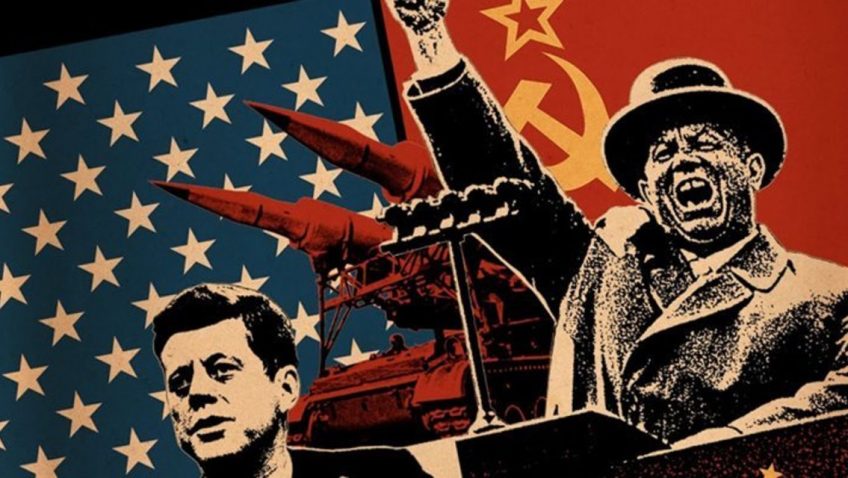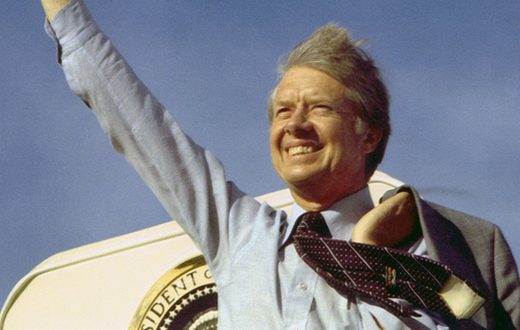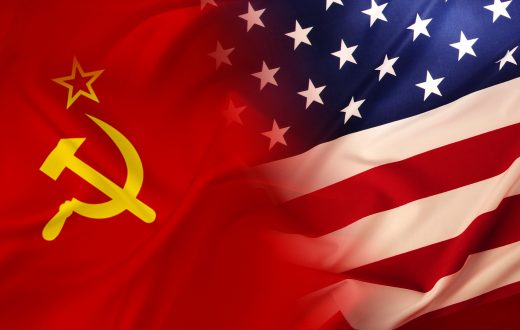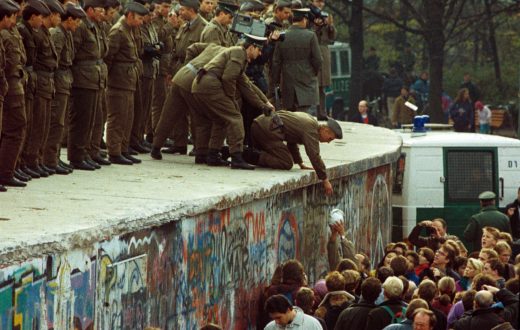For even greatest empires, geography is destiny. Inculcation of geopolitical ambition in foreign policy has played consequential role in augmentation of influence beyond the borders of country. In the same manner, geopolitical ambitions of US foreign policy and its endeavors in this direction were decisive in roll back of communism during cold war.
At the culmination of World War-II, United States of America was only victorious power which had economic vitality, military might and political capability. USA was sole world’s nuclear power, biggest Naval power, held 70% of world’s gold reserves and 35% total world’s GDP. The internecine world wars eviscerated power of France, Germany and Britain, former great colonial powers. USA was a lone harbinger of capitalism in front of communist giant, Soviet Union. Soviet Union –as result of war- aggrandized to East Germany where it was snapping at the heels of capitalism to fall back. USA had to forge a policy for the security of Europe from aggression of Soviet Union and circumscribe the proselytizing of communism across the capitalist world. The vanquished powers –Germany, Italy and Japan-, as well as, emaciated albeit, victorious British and France were economically and politically subservient to USA. Soon after the Russian Bolshevik Revolution in 1917, Leon Trotsky said, “In coming five years we will decide our capital in Paris or Belgrade.” Since 1917 the specter of Communism was hunting Europe.
Soviet Union asked its Ambassador in Washington, Nikolai Novikov, to prepare an assessment review about the USA foreign policy for Stalin. Soviet Union was more curious about the ambition and implication of post war US foreign policy. In the startling revelations, the ambassador emphasized that US is more enthusiast to seize the opportunity and ready for world’s supremacy. US supremacy would be sustained and accentuated through naval bases, military presences in different countries and air bases beyond borders of USA. It was a drastic and monumental change in US foreign policy, as it was not ready to roll back into its shell.
American Ambassador, George F. Kenan, sent a telegram to US President, Harry S. Truman, about the expansionist agenda of USSR. He asked the US president to craft a containment policy in order to circumvent spread of menace of communism. US embarked on the road of containment of USSR. New alliances were forged, Marshall Plan was announced to recuperate parlous and devastated economies of Europe. Initially, Germany was bifurcated into East and West parts. West represented the capitalist bloc and East represented the communist bloc. USA provided succor to Nationalist- KMT- in China to expunge communists from the mainland. In Greece from 1946-1949 there was civil war between the Greek Government Army (backed by USA and UK) and Democratic Army of Greece (supported by USSR). The Soviet backed rebels were defeated. However, it insinuated fears about the domino effect of communism to globe. So, American were doing various activates to preserve their dominance in the world. Firstly, Congress sanctioned the establishment and training of 1 million Army which was to be stationed at different countries. Secondly, UK naval structure was coalesced with American Navy. The Navy intended to deploy in Pacific and Atlantic Ocean. Thirdly, USA started supporting the regimes which were demanding emancipation from repressive forces of communism.
Moreover, the Containment policy of USA was a true reflection of geopolitics of its foreign policy. After the second world war both Democrats and Republicans were on the same for active involvement of USA in world affairs. Later, in 1954 John Foster Dallas- Secretary of State under Eisenhower administration- proposed ‘Ring Policy’. It became bedrock of US foreign policy while choosing allies. The main concern was security of Europe. The victory of Marxism-Leninism in Euro-Asia meant 80% control of world population, resources and territory. The foreseeable future, as a result of fall of Euro-Asia, emergence of new world order whose centrality was Soviet Union. This anticipation was a nightmare for USA and its democratic and capitalist world order. USA was more determined to cut the influence to USSR and overthrow it domestic institution. The defense budget of USA was increased manifold. In 1947 US defense budget was 90.95$ billion dollars and in 1990 it was 355$.37 billion dollars. It was about 400% increase.
USA expanded its air bases and military bases across the world. USA was encircling USSR by consolidating world’s sea lanes, strategic choke points and natural resources. The US fleet initially supplemented British navy but later supplanted it: The Sixth Fleet was based at Naples in 1946 for the control of Atlantic and Mediterranean Sea; the Seventh Fleet at Subic Bay, Philippines, in 1947 for the Western Pacific; the Third Fleet was for security of northern and eastern Pacific Ocean and Fifth Fleet for Bay of Bengal. Additionally, layers of encircling military alliances were added. NATO (1949), SEATO (1954), CENTO (1955) and Japan Security Treaty in 1951. USA deployed Jupiter Missiles in Turkey and Italy as a forward striking capability. Pakistan became its strategic ally in 1954 in South Asian region. Iran was its reliable ally which USA considered ‘Policeman of Middle East’. Even though, in 1953 coup against Dr. Mohammad Mossadeq was cooked by US intelligence agencies to secure its ally, Reza Shah Pehlavi. The fall of Batista in Cuba in 1959 was a great setback for US foreign policy. At the distance of few kilometers- Backyard of USA- Socialist government was installed. In order to preclude ripple effect of Cuban Socialist Revolution US become vigilant in Latin America. In the context geopolitical interest dictatorship was more preferable to communist regime.
Furthermore, USA plunged in Korean War, Vietnam War and surreptitiously provided aid and ammunition to Afghan Mujahedins. The Korean War (1950-1953) was struggle between communist North and Capitalist South. The active involvement of USA in the war inflicted heavy human loss on USA. For almost three years USA and Communist China blooded each other. In the same manner, Vietnam was a quagmire for USA. Initially in mid of 1960s USA provided logistic support but later landed its forces. The guerrilla struggle was a huge drainage of its economic resources and manpower. The end of Vietnam War was considered a surrender by USA. In Afghanistan USA avoided its active participation but left no stone unturned in defeat of Soviet Red Army. 6$ billion dollars were spent on the war. At last, USA gave taste of medicine of Vietnam war to Soviet Union in Afghan War. USSR evacuated Afghanistan after humiliating loss at the hands of Afghan Mujahidens who were supported by USA. More precisely, USA played a role of intermediary and facilitator in Arab- Israel conflict, Sino-Indo conflict, Pak-India conflict. The primary concern was not to allow the influence of USSR in any of the state.
In a hindsight, geopolitics of US foreign policy during cold war revolved around containment of USSR. In this hybrid conflict- power and ideology- US successfully created layer of Euro-Asian alliances in order to prevent advance of communist ideology and its influence.








